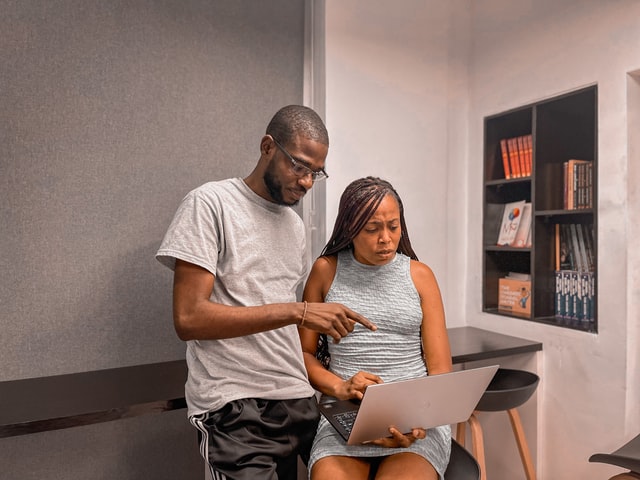Lesson notes are essential tools for effective teaching in secondary schools in Nigeria. They serve as a guide for teachers to follow during classroom instruction and ensure that learning objectives are met.
A well-written lesson note can help teachers organize their thoughts, plan lessons effectively, and stay on track with the curriculum.
This article will provide a comprehensive lesson note format for secondary schools in Nigeria.
We will discuss the essential components of a lesson note, including instructional objectives, instructional materials, instructional procedures, assessment/evaluation, and homework/assignment.
Additionally, we will provide some tips for creating practical lesson notes that can help teachers improve their teaching skills and enhance the learning experience for their students.
Table of contents
Components of a Lesson Note

Creating a lesson note involves a lot of work and requires teachers to include essential components to help them achieve their instructional objectives.
These components provide a clear guide for teachers during classroom instruction and ensure students achieve the intended learning outcomes.
In this section, we will explore the critical elements of a lesson note and explain their importance in lesson planning.
1. Learning Objectives
Learning objectives are statements that describe what students should be able to do, understand, or know as a result of a particular lesson.
They provide a clear and specific target for teachers to aim for during classroom instruction and help to focus student learning.
Learning objectives are significant in reading planning because they provide a clear direction for teachers to follow and help to ensure that instructional activities are aligned with the overall curriculum goals.
Examples of well-crafted objectives for secondary school subjects in Nigeria are:
- Mathematics: By the end of the lesson, students can solve quadratic equations using the quadratic formula.
- English Language: By the end of the lesson, students will be able to identify and explain the different types of sentence structures.
- Biology: By the end of the lesson, students will be able to describe the functions of the different parts of a plant cell.
- Physics: By the end of the lesson, students will be able to explain the concept of electric current and its measurement using an ammeter.
- Social Studies: By the end of the lesson, students will be able to describe the causes and effects of the Nigerian civil war.
These objectives are specific, measurable, achievable, relevant, and time-bound.
They provide a clear target for teachers to aim for during classroom instruction and help ensure learning outcomes are met.
2. Materials/Resources
Materials and resources are essential components of effective teaching and learning in secondary schools in Nigeria.
They promote active learning, enhance education, provide differentiated instruction, and motivate students.
Teachers must plan for and include materials and resources in their lesson notes to ensure they have everything they need to deliver a practical lesson.
Commonly used materials and resources in secondary schools in Nigeria include textbooks, visual aids, audiovisual aids, laboratory equipment, models and maps, and educational software.
Textbooks are essential resources that provide students with crucial information and knowledge about different subjects.
Visual aids such as charts, diagrams, and graphs help to make complex concepts more accessible and easy to understand.
Audiovisual aids such as videos, podcasts, and interactive multimedia software help to engage students and make learning more interactive.
Laboratory equipment such as microscopes, beakers, and test tubes are essential for science subjects and help students to perform experiments and understand scientific concepts.
Models and maps give students a three-dimensional view of complex concepts such as human anatomy, geography, and architecture.
Educational software such as learning management systems, educational games, and simulations help to make learning more interactive and engaging.
By incorporating these resources into their lesson plans, teachers can create a more exciting and practical learning experience for their students.
By including materials and resources in their lesson note, teachers can also ensure they are adequately prepared for the lesson and have everything they need to deliver an engaging and practical learning experience.
Procedure for Creating a Lesson Note

Creating a lesson note involves steps that help teachers organize their thoughts, plan their lessons, and cover all the necessary material.
Here are the steps involved in creating a lesson note:
- Determine the Lesson Objectives: Start by identifying the learning objectives for the lesson. These objectives should be specific, measurable, and achievable. They should also align with the curriculum and the student’s learning needs.
- Select Instructional Materials: Determine the materials and resources needed to deliver the lesson. These may include textbooks, visual aids, audiovisual aids, laboratory equipment, models, and maps.
- Plan Instructional Procedures: Plan the instructional procedures you will use to deliver the lesson. These procedures should be engaging, interactive, and tailored to the learning objectives and the student’s needs.
- Plan Assessment/Evaluation: Determine the assessment/evaluation techniques that you will use to determine if the students have achieved the learning objectives. These may include tests, quizzes, assignments, or projects.
- Plan Homework/Assignment: Determine the homework/assignment you will give the students to reinforce their learning and ensure that they understand the material covered in the lesson.
Lesson Note Format for Secondary Schools in Nigeria
Here is a detailed lesson note format for secondary schools in Nigeria that includes the components discussed above:
Elements of lesson note format for secondary schools in Nigeria
- Introduction
Introduce the topic and provide background information to engage the students.
- Instructional Objectives
State the specific learning objectives the students are expected to achieve by the end of the lesson.
- Instructional Materials
List the materials and resources that will be used during the lesson.
- Instructional Procedures
Outline the instructional procedures that will be used to deliver the lesson.
These procedures should be engaging, interactive, and tailored to the learning objectives and the student’s needs. - Assessment/Evaluation
Describe the assessment/evaluation techniques that will be used to determine if the students have achieved the learning objectives.
- Homework/Assignment
Provide the homework/assignment that the students will be given to reinforce their learning and ensure they understand the material covered in the lesson.
By following this lesson note format, teachers can create effective lesson plans that engage students, achieve learning objectives, and ensure that students thoroughly understand the material covered.
Sample Format
Here’s an example of a lesson note format for secondary schools in Nigeria:
Subject: [Subject Name]
Class: [Class Level and Section]
Duration: [Length of Lesson]
Objectives:
[State the specific learning objectives for the lesson, e.g. “By the end of the lesson, students will be able to identify and explain the different types of energy.”]
Materials/Resources:
[List all the materials and resources needed for the lesson, e.g. textbooks, handouts, videos, etc.]
Procedure:
[Outline the steps you will take to achieve the lesson objectives, e.g. “Introduce the concept of energy using a short video clip and ask students to identify different types of energy.”]
Assessment/Evaluation:
[Explain how you will assess student learning, e.g. “Students will complete a worksheet that requires them to identify and explain the different types of energy.”]
Homework/Assignment:
[Assign homework or independent study activities related to the lesson, e.g. “Read pages 30-35 in the textbook and answer questions 1-5 at the end of the chapter.”]
Note: [Include any other notices or information that may be relevant, e.g. “Students who do not complete the homework will be required to complete it during lunchtime the following day.”]
Tips for Creating Effective Lesson Notes
- Understand Your Students: Before creating your lesson note, it’s essential to understand your student’s needs and learning styles. This will help you tailor your lesson to their learning needs and make it more engaging.
- Define Clear Learning Objectives: Your lesson note should clearly state the learning objectives for the lesson. These objectives should be specific, measurable, and achievable.
- Plan Engaging Instructional Procedures: Your lesson note should outline engaging and interactive instructional procedures to help students achieve the learning objectives.
- Use Visual Aids and Technology: Incorporating visual aids and technology in your lesson note can help make the lesson more engaging and interactive.
- Incorporate Assessment Techniques: Your lesson note should include assessment techniques to help you determine if the students have achieved the learning objectives.
- Include Homework and Assignments: Your lesson note should provide homework and assignments that will help students reinforce their learning and ensure they understand the material covered in the lesson.
- Review and Refine Your Lesson Notes: After delivering your lesson, refine your lesson note based on the feedback you received from your students. This will help you improve your future lesson notes and create a more effective learning experience for your students.
Conclusion
In conclusion, creating practical lesson notes is essential for teachers to achieve their instructional objectives, engage students, and ensure they thoroughly understand the material.
By understanding their student’s needs and learning styles, defining clear learning objectives, planning engaging instructional procedures, using visual aids and technology, incorporating assessment techniques, and including homework and assignments, teachers can create practical lesson notes that result in successful learning outcomes.
By following the lesson note format outlined in this article and implementing the tips provided, teachers can create helpful lesson notes that enable students to achieve their full potential and become lifelong learners.
Let me know if you have any questions or need further clarification. I would love to assist you.
You can watch my videos on the Studentship YouTube Channel by clicking here.
Join my Facebook Group, Like my Facebook Page or Follow Me on WhatsApp for more interactive discussions.

This is just so amazing. Well structured and digestible.
You’re are welcome. Glad you find the Lesson Note format helpful.
Thanks so much it’s was really helpful
You’re welcome.
Glad to help.
Thanks it was really helpful to me
You’re welcome.
I am glad I could help
This was helpful. Thanks
I am glad I could be of help.
Cheers
Thanks alot❤️
This was really helpful
You’re welcome.
Glad I could help.